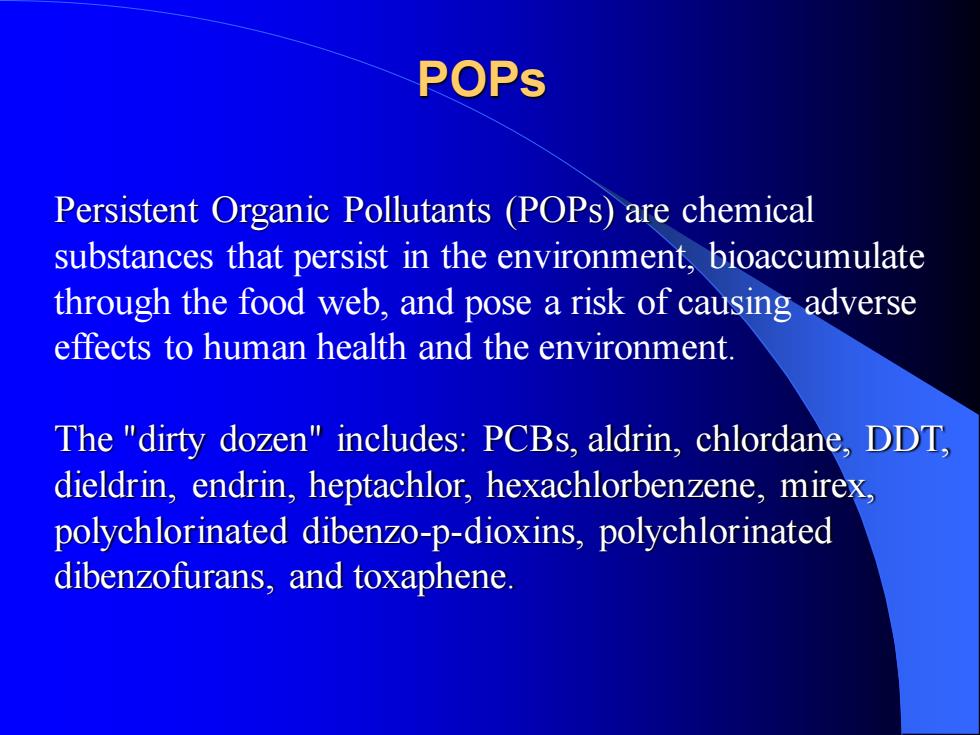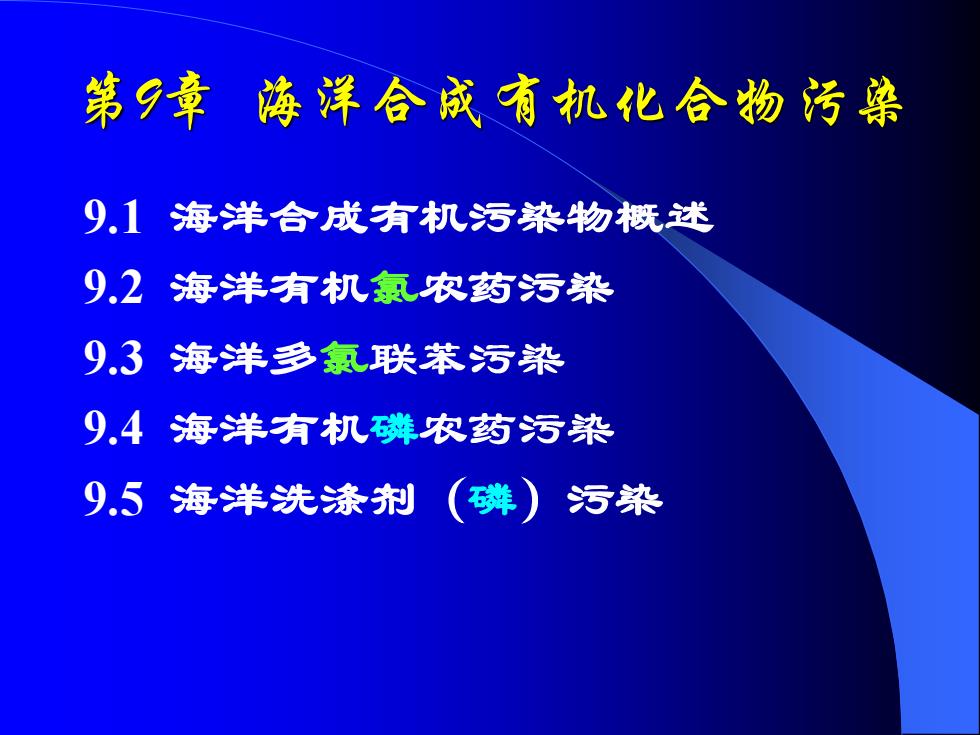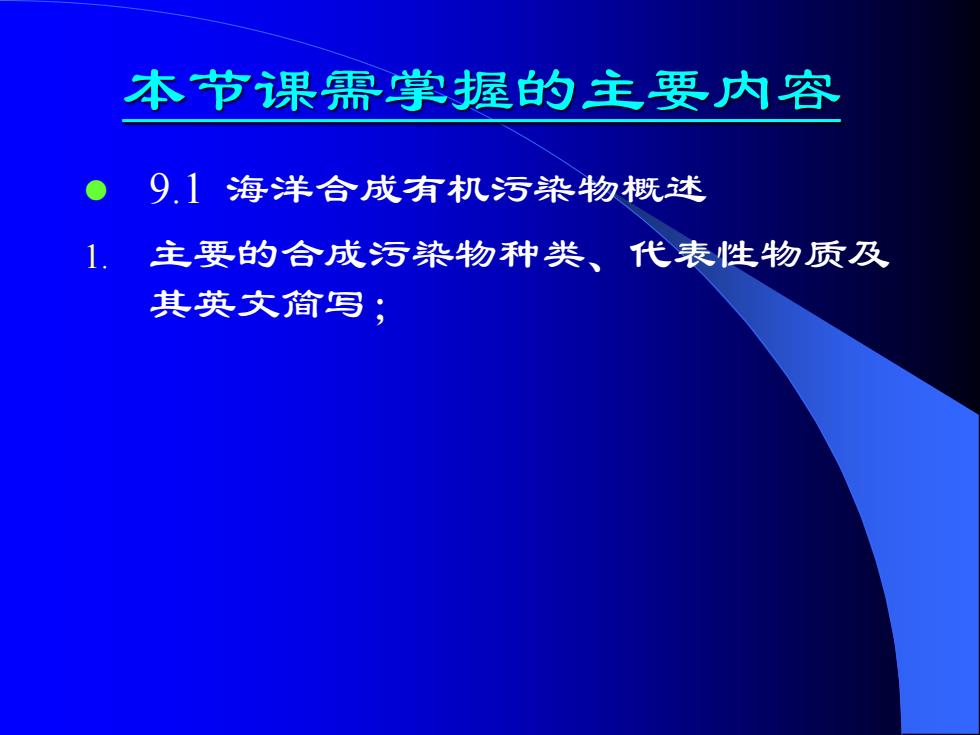
POPs Persistent Organic Pollutants (POPs) are chemical substances that persist in the environment, bioaccumulate through the food web, and pose a risk of causing adverse effects to human health and the environment. The "dirty dozen" includes: PCBs, aldrin, chlordane, DDT, dieldrin, endrin, heptachlor, hexachlorbenzene, mirex, polychlorinated dibenzo-p-dioxins, polychlorinated dibenzofurans, and toxaphene
POPs Persistent Organic Pollutants (POPs) are chemical substances that persist in the environment, bioaccumulate through the food web, and pose a risk of causing adverse effects to human health and the environment. The "dirty dozen" includes: PCBs, aldrin, chlordane, DDT, dieldrin, endrin, heptachlor, hexachlorbenzene, mirex, polychlorinated dibenzo-p-dioxins, polychlorinated dibenzofurans, and toxaphene

Organic Pollutants Examples = Dioxin, PCB, DDT (Chlorinated) Dioxin: stable; slow to degrade
Organic Pollutants Examples = Dioxin, PCB, DDT (Chlorinated) Dioxin: stable; slow to degrade

第9章 海洋合成有机化合物污染 9.1 海洋合成有机污染物概述 9.2 海洋有机氯农药污染 9.3 海洋多氯 9.4 海洋有机磷 9.5 海洋洗涤剂(磷)污染
第9章 海洋合成有机化合物污染 9.1 海洋合成有机污染物概述 9.2 海洋有机氯农药污染 9.3 海洋多氯 9.4 海洋有机磷 9.5 海洋洗涤剂(磷)污染

本节课需掌握的主要内容 ⚫ 9.1 海洋合成有机污染物概述 1. 主要的合成污染物种类、代表性物质及 其英文简写;
本节课需掌握的主要内容 ⚫ 9.1 海洋合成有机污染物概述 1. 主要的合成污染物种类、代表性物质及 其英文简写;

本节课需掌握的主要内容 ⚫ 9.2 海洋有机氯农药污染 1. P,P′- DDT的光分解反应、微生物降解 反应(脱氯、脱卤化氢作用)方程式, P52-53
本节课需掌握的主要内容 ⚫ 9.2 海洋有机氯农药污染 1. P,P′- DDT的光分解反应、微生物降解 反应(脱氯、脱卤化氢作用)方程式, P52-53